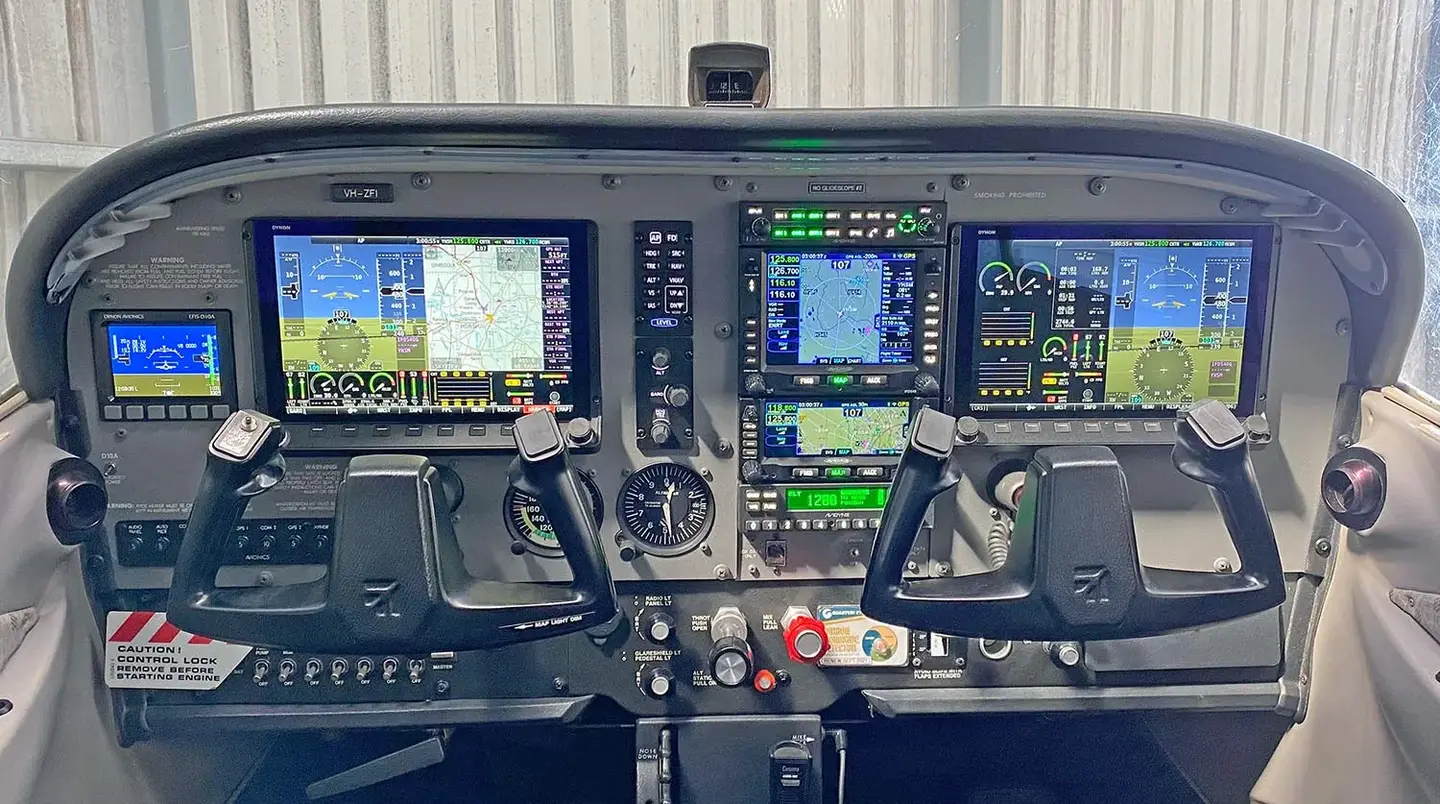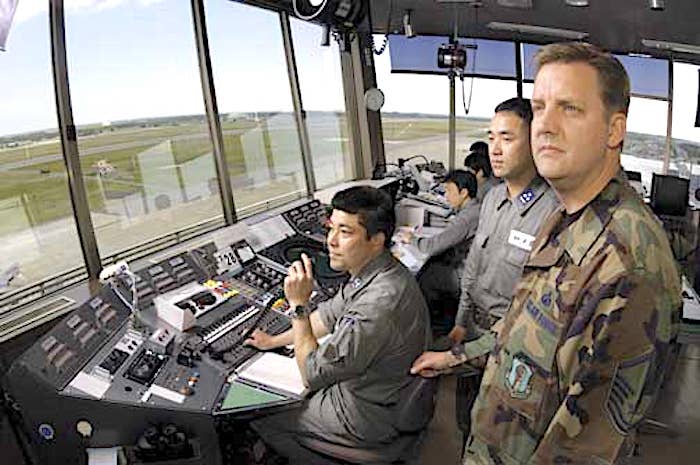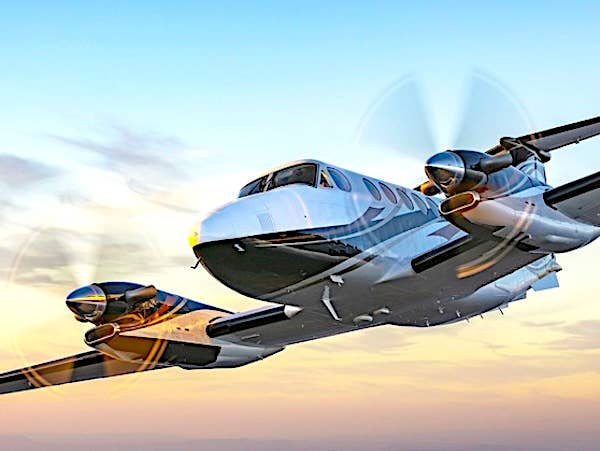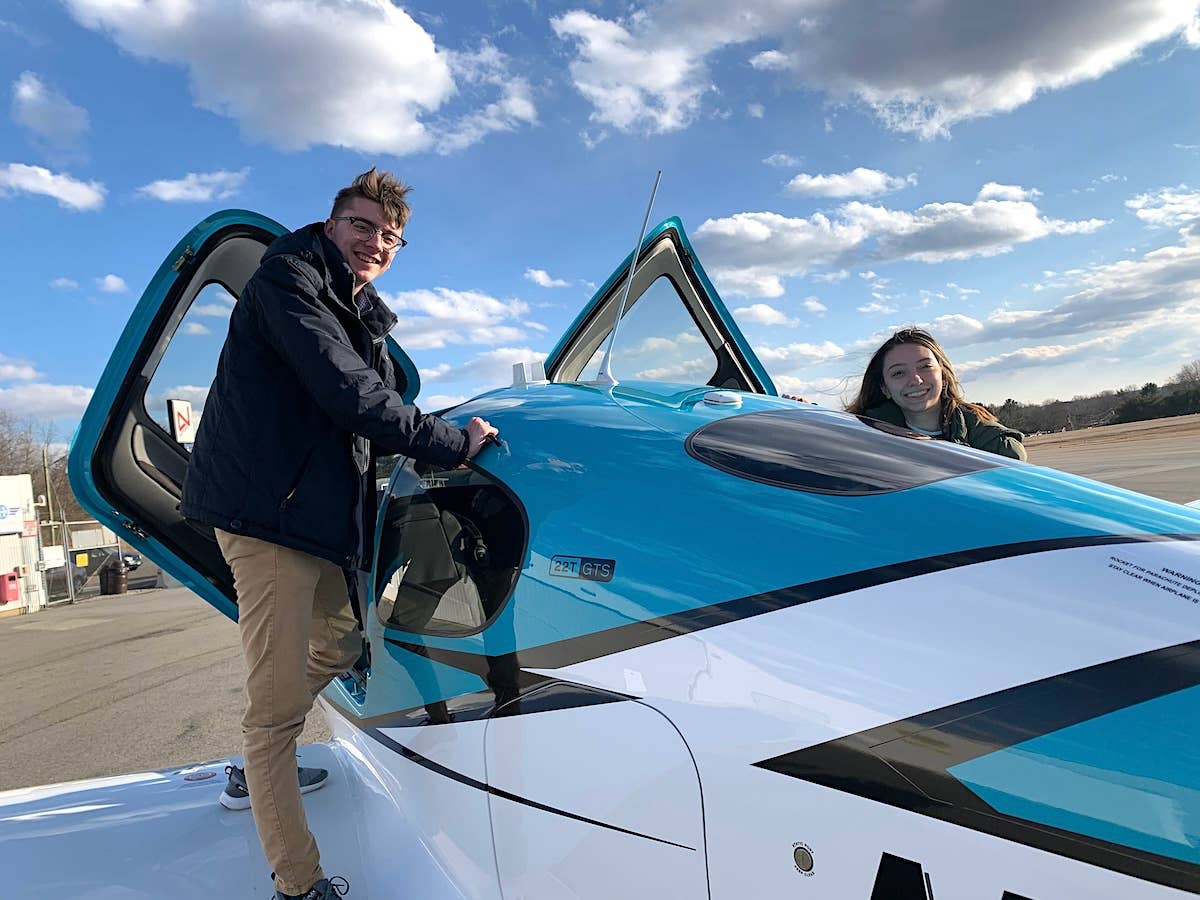‘Seaglider’ Concept Takes On Over-Water Travel Challenge, With a Twist
Regent, a New England-based company formed a few years ago by a pair of MIT graduates and aeronautical-industry refugees, is challenging conventions involving airplanes and high-speed boats. Can a winged…
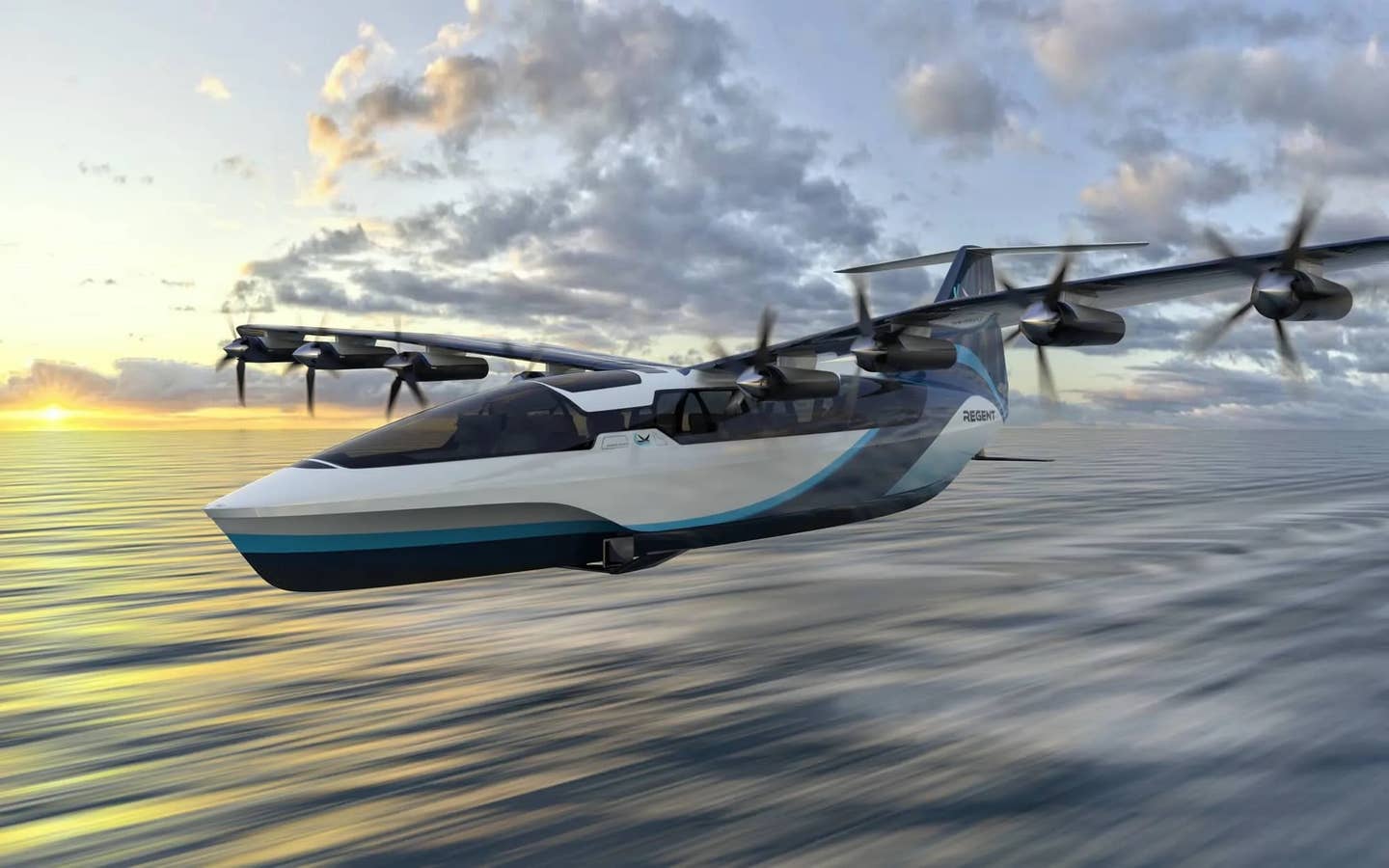
Image: Regent
Regent, a New England-based company formed a few years ago by a pair of MIT graduates and aeronautical-industry refugees, is challenging conventions involving airplanes and high-speed boats. Can a winged vehicle capable of leaving the surface of the water still be classed as a watercraft and not an airplane? And what does that difference mean for its future prospects?
Regent self-describes as “the company pioneering electric seagliders for sustainable maritime transportation.” So, what exactly is a seaglider? How is it different from a hydrofoil, whose hull rises from the surface of the water onto thin lifting vanes attached to the underside?
A seaglider is a "wing-in-ground effect” vehicle, or "WIG," according to Regent co-founder and CEO Billy Thalheimer. It takes the concept of a hydrofoil a step further (so to speak). Though it does have vanes and is designed to also operate as a hydrofoil at times, Regent’s electric-powered seaglider uses a gull-shaped high wing to lift the hull completely off the surface, but never higher than its wingspan. Using that cushion of air well known to pilots, the craft can attain speeds up to 160 knots and has a range of up to 160 statute miles—expected to expand to as far as 500 miles with improvements in battery technology. The current business plan calls for short-range, dock-to-dock service between cities a few hundred miles apart, such as Boston and New York, or Los Angeles and San Francisco. The company projects other possible maritime markets, including the Caribbean, Hawaii and the English Channel.
In 2021, Thalheimer and co-founder Mike Klinker published an engineering white paper titled “Opportunities for Electric Seagliders in the Future Sustainable Transportation Ecosystem.” Regent has since attracted interest from investors and business partners including Lockheed Martin, Japan Airlines, Mesa Airlines, Hawaiian Airlines and Mark Cuban Companies, among many others. The company claims $8 billion in preorders (albeit: terms not disclosed) for up to 500 seagliders.
Last September, Regent successfully test-flew a quarter-scale proof of concept pilotless prototype. This April, it revealed a full-size mockup of its proposed 12-passenger Viceroy model. That version is scheduled for manned flight next year, with service entry to follow "shortly." Ultimate plans call for a 100-passenger version.
What might be its best attribute from the business perspective of developmental cost is the fact that a seaglider, billed as half the cost of an airplane, but six times as fast as a conventional ferry, never climbs out of ground effect, and is designed to travel exclusively over water. One of the greatest safety challenges of electric airplanes—running out of juice with nowhere to land—is not nearly as much of a hazard with a seaglider.
Thalheimer pointed out, “This is not aviation. Maritime captains will be in the cockpit. We’re being put through an extremely rigorous certification process. It just happens to be by the Coast Guard.”


